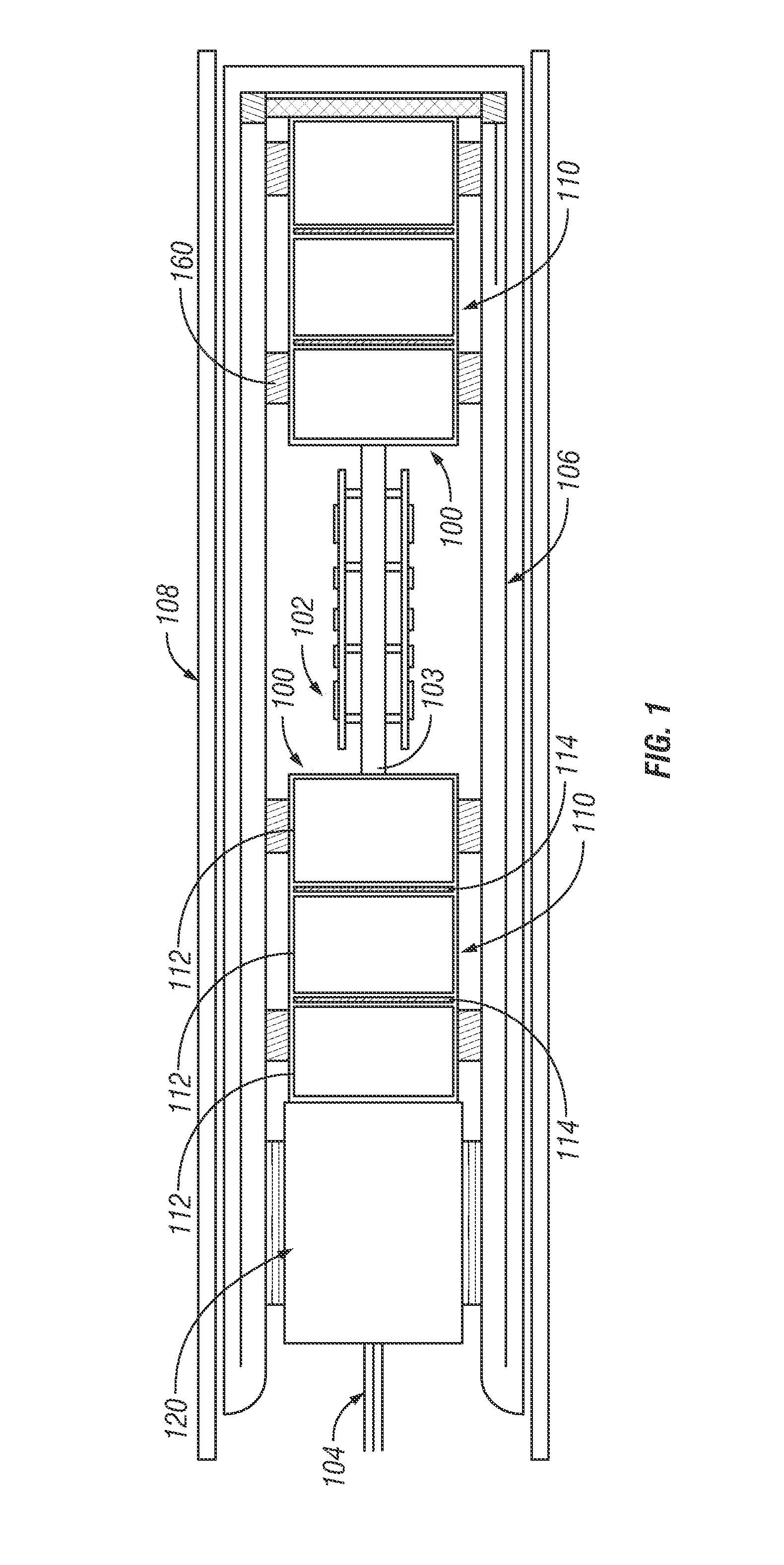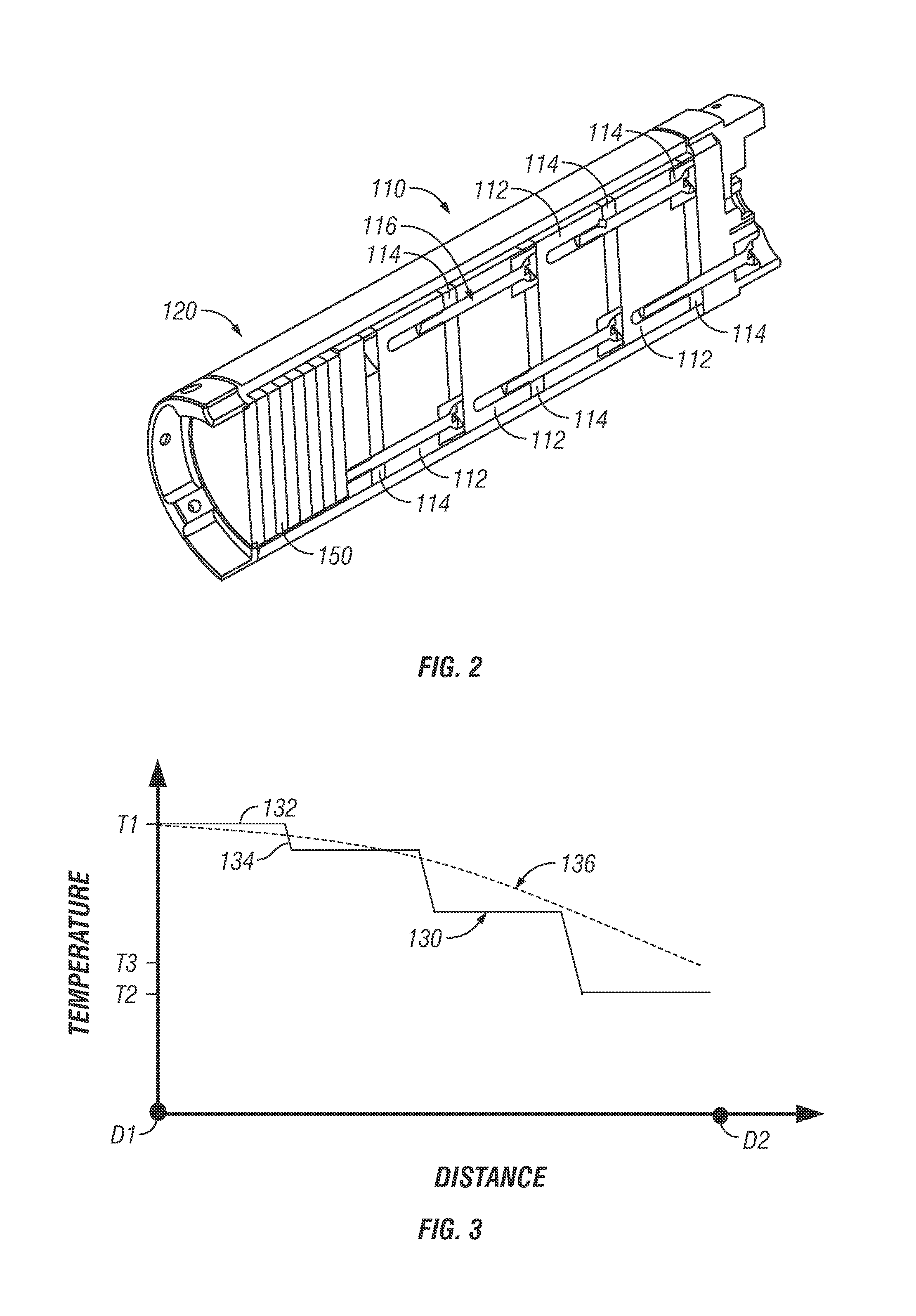Thermal isolation devices and methods for heat sensitive downhole components
a technology of heat-sensitive components and thermal isolation devices, which is applied in the direction of insulation, borehole/well accessories, survey, etc., can solve the problems of affecting the use of instruments, affecting the efficiency of the operation of the equipment, and affecting the efficiency of the equipment. , to achieve the effect of reducing the cross-sectional area, and preventing the flow of hea
- Summary
- Abstract
- Description
- Claims
- Application Information
AI Technical Summary
Benefits of technology
Problems solved by technology
Method used
Image
Examples
Embodiment Construction
[0017]The present disclosure relates to devices and methods isolating heat sensitive components from a wellbore environment and / or heat generated by downhole components. The term “heat sensitive component” shall hereinafter be used to refer to any tool, electrical component, sensor, electronic instrument, structure, or material that degrades either in performance or in integrity when exposed to temperatures above 200 degrees centigrade. For purposes of discussion, a wellbore may be considered “hot” if the ambient temperature compromises or impairs the structural integrity, operating efficient, operating life, or reliability of a given tool, device, or instrument.
[0018]Aspects of the present disclosure may be utilized to increase temperature survival time of downhole tools and thereby increase the time heat sensitive equipment may be deployed in a wellbore. As will be appreciated, the present invention is susceptible to embodiments of different forms. There are shown in the drawings,...
PUM
 Login to View More
Login to View More Abstract
Description
Claims
Application Information
 Login to View More
Login to View More - R&D
- Intellectual Property
- Life Sciences
- Materials
- Tech Scout
- Unparalleled Data Quality
- Higher Quality Content
- 60% Fewer Hallucinations
Browse by: Latest US Patents, China's latest patents, Technical Efficacy Thesaurus, Application Domain, Technology Topic, Popular Technical Reports.
© 2025 PatSnap. All rights reserved.Legal|Privacy policy|Modern Slavery Act Transparency Statement|Sitemap|About US| Contact US: help@patsnap.com



